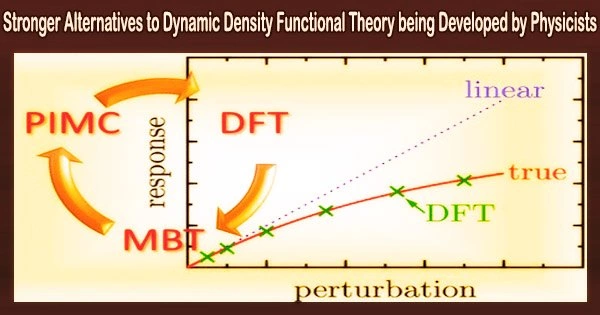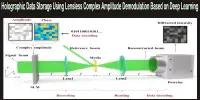From a physics perspective, examples of exceptionally vast and complex systems that are not in thermal equilibrium include living things, ecosystems, and the planet Earth. Dynamic density functional theory has been applied to date to physically describe non-equilibrium systems.
But as physicists from the University of Bayreuth have now demonstrated in a paper that was published in the Journal of Physics: Condensed Matter, this hypothesis has flaws. When combined with AI techniques, power functional theory performs noticeably better because it makes it possible to describe and forecast the behavior of non-equilibrium systems over time with greater accuracy.
Systems made up of atoms, electrons, molecules, and other particles that are invisible to the naked eye are known as many-particle systems. When the temperature is balanced and there is no heat flow, they are in thermal equilibrium. Only when the environment changes will a system in thermal equilibrium change its state. Such systems are ideal candidates for the study of density functional theory.
It has demonstrated its limitless significance in chemistry and materials research for more than fifty years. The states of equilibrium systems can be defined and predicted with excellent accuracy based on a potent classical variation of this theory.
Dynamic density functional theory (DDFT) extends the scope of this theory to non-equilibrium systems. The physical comprehension of systems whose states are not fixed by their external boundary conditions is required for this.
These systems can alter their states without the assistance of outside forces because they possess an independent momentum. Therefore, DDFT results and application techniques are highly relevant, for example, to the study of models for living organisms or tiny processes.
Our investigation provides further evidence that power function theory is a very promising concept that can be used to describe and explain the dynamics of many-particle systems. In Bayreuth, we intend to further elaborate this theory in the coming years, applying it to nonequilibrium systems that have a much higher degree of complexity than the fluid flow we studied. In this way, the PFT will be able to supersede the dynamic density functional theory, whose systemic weaknesses it avoids according to our findings so far. The original density functional theory, which is tailored to equilibrium systems and has proven its worth, is retained as an elegant special case of PFT.
Professor Dr. Matthias Schmidt
The error potential of dynamic density functional theory
But in order to make non-equilibrium systems amenable to physical description, DDFT employs an auxiliary architecture. It converts these systems’ continuous dynamics into a temporal progression of equilibrium states. This results in a potential for errors that should not be underestimated, as the Bayreuth team led by Prof. Dr. Matthias Schmidt shows in the new study.
The investigations concentrated on a comparably straightforward case study: the unidirectional flow of a gas described as a “Lennard-Jones fluid” in physics. One component of the system’s time-dependent dynamics, namely the flow field, is overlooked if this nonequilibrium system is seen as a succession of equilibrium phases. As a result, DDFT may provide inaccurate descriptions and predictions.
“We do not deny that dynamic density functional theory can provide valuable insights and suggestions when applied to nonequilibrium systems under certain conditions. The problem, however, and we want to draw attention to this in our study using fluid flow as an example, is that it is not possible to determine with sufficient certainty whether these conditions are met in any particular case. The DDFT does not provide any control over whether the restricted framework conditions are given under which it enables reliable calculations. This makes it all the more worthwhile to develop alternative theoretical concepts for understanding nonequilibrium systems,” says Prof. Dr. Daniel de las Heras, first author of the study.
Power functional theory proves to perform substantially better
For ten years, the research team around Prof. Dr. Matthias Schmidt has been making significant contributions to the development of a still young physical theory, which has so far proven to be very successful in the physical study of many-particle systems: power functional theory (PFT).
With the same accuracy and grace that classical density functional theory makes it possible to analyze equilibrium systems, Bayreuth physicists aim to be able to characterize the dynamics of non-equilibrium systems.
They now demonstrate in their new paper that power functional theory outperforms DDFT when it comes to comprehending non-equilibrium systems by using the example of a fluid flow. PFT makes it possible to describe the dynamics of these systems without having to go through a series of succeeding equilibrium states in time.
The decisive factor here is the use of artificial intelligence. By taking into account all elements pertinent to the system’s inherent dynamics, including the flow field, machine learning opens up the time-dependent behavior of the fluid flow. The team has even been able to precisely control the flow of the Lennard-Jones fluid using this method.
“Our investigation provides further evidence that power function theory is a very promising concept that can be used to describe and explain the dynamics of many-particle systems. In Bayreuth, we intend to further elaborate this theory in the coming years, applying it to nonequilibrium systems that have a much higher degree of complexity than the fluid flow we studied. In this way, the PFT will be able to supersede the dynamic density functional theory, whose systemic weaknesses it avoids according to our findings so far. The original density functional theory, which is tailored to equilibrium systems and has proven its worth, is retained as an elegant special case of PFT,” says Prof. Dr. Matthias Schmidt, who is chair of theoretical physics II at the University of Bayreuth.















